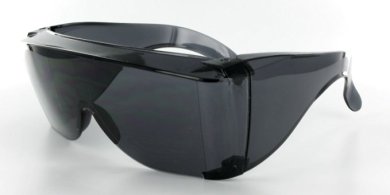Playing The Hand I Was Dealt
Surviving Keratoconus & A Body Falling To Pieces
Monthly Archives: December 2012
I’M TURNING INTO MS. BIGGLESWORTH

Photo Source: http://sr.photos2.fotosearch.com/bthumb/CSP/CSP097/k0974598.jpg
Three weeks ago, or nine weeks after my cross-linking surgery, I started to notice more hair than normal in the shower. Then I noticed clumps of hair in my wide tooth comb. Soon enough, the drain in the tub began to clog until I opened it up and found the mother of all hairballs.
Now, I’ve had this happen before. When I first got sick in 2001 with what I was told was fibromyalgia—stay tuned for a possible misdiagnosis post* (see update), my hair started to do the same thing until I lost at least 1/2 of it, if not more. It finally stopped falling out but didn’t grow back to its original thickness until I finally forced a GP to put me on thyroid medication, as my TSH was borderline high. It eventually grew back, but fell out two more times (not as badly) when I switched doctors and they subsequently screwed up my thyroid by switching my medication. However, this round, my hair is not only falling out but also has this strange texture, which makes little sense considering my hair is finally getting long—nearly 3 years later—and has a lot of “old growth.”
I chalked it up to stress on my body from the CXL surgery (read my last post) or the stress of dealing with my mother pre- and post-op. That didn’t quite fit the bill when I realized I had pretty traumatic surgery both physically and mentally in 2006 and no hair loss. Hmmm… What could be the root cause? I always seem to diagnose every malady I have so I just kept focusing on everything “cross-linking.” Then it hit me like a ton of bricks (or a giant hairball) while I was trying to get my Carol’s Daughter shampoo and conditioner through my now beyond coarse, dry, and unruly hair—that was a plug for CD… Great for ethnic, curly hair. Anyway, it had to be the Pred Forte eye drops, also known as steroids.
I started those drops on day 5 with instructions to use them 4 x day until told to stop. Steroids are used after CXL to prevent hazing, which I got anyway, although it went away within 2 weeks. I cannot take steroids, so I was worried about that drug, but an eye drop? How much can get into your system? A lot. I instantly got the insomnia—even while on Ambien to sleep, the night sweats, and my chronic musculoskeletal pain was through the roof. I stuck it out for 17 days and got permission from my surgeon in L.A. to stop the drug. All side effects subsided, or so I thought.
After researching this tonight, it appears there’s a huge connection between steroids and hair loss—a lot of hair loss—and that it continues long after you stop them. I do know that it takes 3 months for hair that has fallen out of the follicle to actually grow—or fall—out of your head, so I really am hoping this will stop soon since I wasn’t on the steroid for that long. The odd thing is that it changes the texture of your hair and makes it coarse, dry, and frizzy, which would be my natural texture—plus curly, so it’s a hot mess right now. I do get a trim next week and hope more layering (I lost any guys reading this) will hide the thinning that is rather obvious with my dark hair and pale scalp. I can’t chop it off after nearly 3 years of growing it out!
I know this might all seem trivial, like for those on chemo or men who are going permanently bald, but I’m famous for my dark, thick, curly hair and at this point, it’s all I have going for me!


